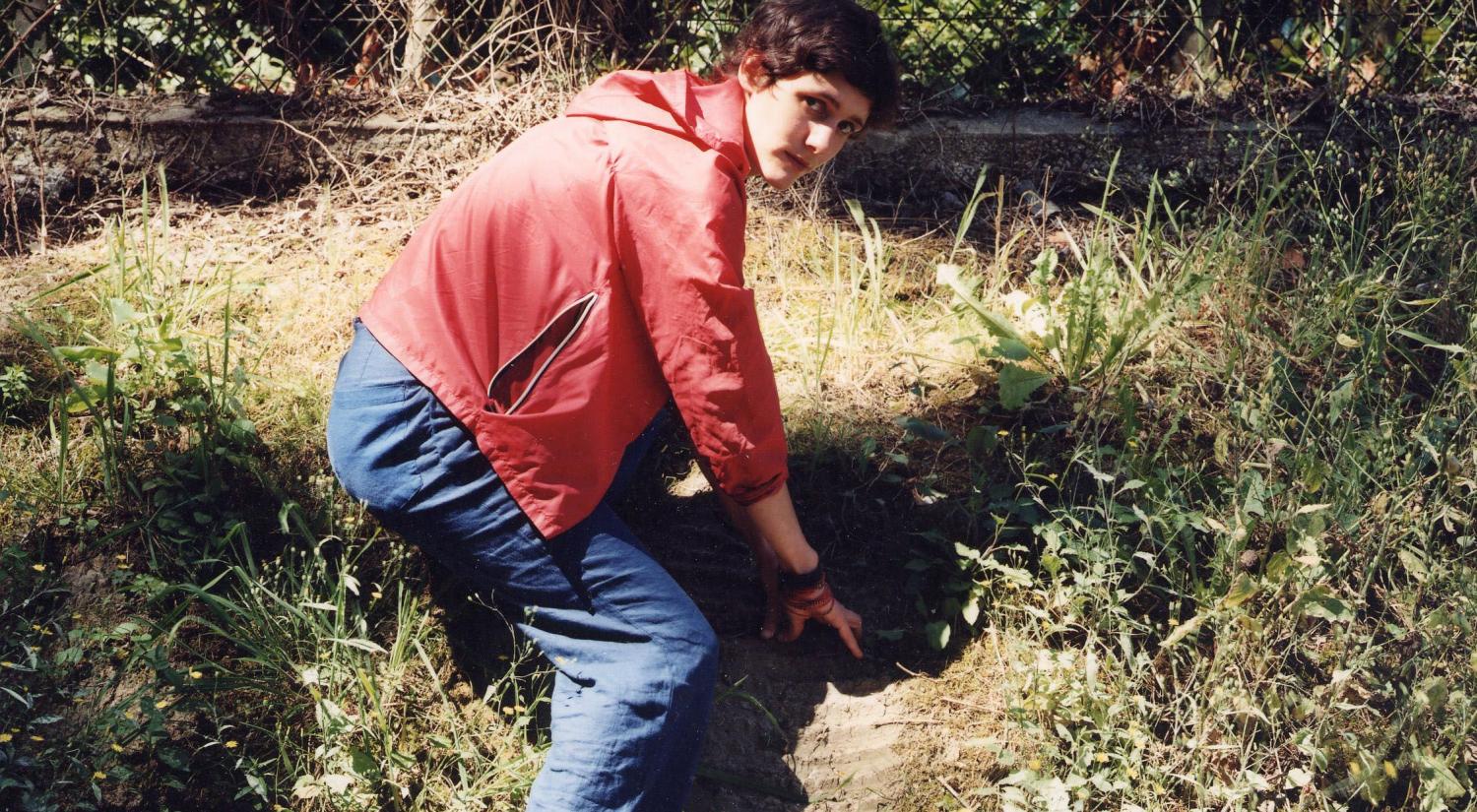A dark-haired teenager is crawling, on her knees, her side turned towards the beholder. Her head is turned, as she looks over her shoulder into the camera lens with a hesitant gaze. The ground around her is covered by a self-grown mix of grasses and weeds, and behind her, a wire fence separates the foreground from a dense shrub. The young woman seems frozen in mid-movement. Is she fleeing or coming towards us?
Cinematographic energy
Even though photography freezes a moment in time, Bustamante’s works are never static. On the contrary, the artist always seems to give his audience a hint of something that is happening. They are simultaneously reminiscent of snapshots of real people and places and – especially by virtue of their scale – of carefully choreographed tableaux, where it is up to us to imagine the time, place and context. That is also the case with Amazone T.C.B 1.02. It feels as if something happened – or is about to happen – just before or just after the moment captured in the picture. In other words, Bustamante causes the beholder to pause by hinting at a story without making it explicit. This approach brings a certain cinematographic energy to his work.
Ambiguous transitional spaces
The hesitation that characterizes the temporal aspect of the picture is reflected in Bustamante’s choice of motifs. They often consist of scenes where wild, natural elements are juxtaposed with signs of civilization and human figures. The young woman’s surroundings in Amazone T.C.B 1.02 look like the unused strips of land bordering roads and highways, which show the impact of urbanization while at the same time seeming abandoned, on their way to being reclaimed by nature. Similarly, the young woman embodies a sense of indeterminacy through her hesitant body language, androgynous appearance, indeterminate age and retro-style clothing. She seems to hover in between childhood and adulthood, between past and present. The artist describes this effect as an ‘entre-deux’ – a gap or transitional space ‘in between’ two points.
Contemporary photography
Now part of Louisiana’s collection, Bustamante’s piece joins the company of other international art photographers, including Rineke Dijkstra, Jeff Wall and Cindy Sherman. As a whole, the collection demonstrates recent decades’ multimedial developments in a field where large formats and formal effects from painting are often mixed with the realistic aesthetic that we know from documentary photography.
About the artist
Jean-Marc Bustamante (b. 1952) studied photography and economics and works within a broad range of media. He represented France at the Venice Biennale in 2003 and took part in Documenta 8, 9 and 10. His works are included in the collections of the Musée National d’Art Moderne in Paris, Museo Reina Sofia in Madrid and the Metropolitan Museum of Art in New York. Since 2015, Jean-Marc Bustamante has been the director of the art academy École des Beaux-Arts in Paris.



